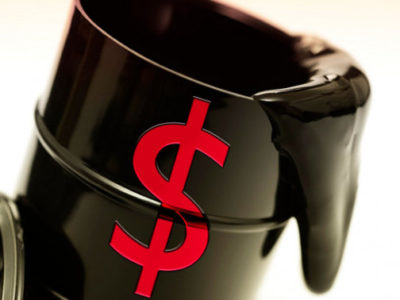Crude oil prices may be heading towards stability
Crude oil prices might have hit rock bottom according to an official report. According to the International Energy Agency (IEA), there are now signs of stability within the oil markets and also cautious optimism for price increases in the near future.
According to a report released by the same Agency on Friday, during February there was a reduction of oil output by 180,000 barrels per day to 96.5 million barrels per day (0.2%) from both OPEC and non-OPEC producers. It is estimated by IEA that the decreased output, as well as lower supply levels from Iran than initially estimated, helps in reducing the global crude oil surplus.
Crude oil prices have plunged by 37% since May 2014 and even fell under $28 per barrel during the first month of this year. Given that it is responsible for the coordination of the energy policies of oil producers, the IEA estimates that the production from non-OPEC nations might fall by 750,000 barrels per day during 2016. The initial estimate was for a reduction by 600,000 barrels per day. United States, the world’s largest crude oil producer, is estimated to cut supply during 2016 by 530,000 barrels per day.
Markets were over supplied during the last few years from a boom in U.S. crude oil production thanks to the popularity of fracking. This process involves injecting high pressured liquid into underground rocks, forcing the opening of fissures for the extraction of oil and gas. Added to that, OPEC member nations were unwilling to cut down on production and assist in establishing a floor of crude oil prices due to fears of losing their market share. At the other side of the trade chain, China (the world’s second largest commodities consumer) significantly decreased its crude oil demand and magnified worries for global slowdown in economic growth. These were the main reasons for the nose dive of crude oil prices during the second half of 2014 and the entire 2015.
Profits of the world’s leading oil firms have tumbled and that caused a dramatic reduction in new project investing, with more than 4,000 employment positions were cut in the North Sea oil industry since 2014.
During mid February prices fell under $28 per barrel but since then there was a gradual recovery parallel to statements of both Saudi Arabia and Russia that they could freeze output. Brent Crude on Friday increased by 0.8% to $40.39 per barrel and West Texas Intermediate (WTI) also increased by 1.7% to $38.50 per barrel. On a weekly basis both the Brent Crude and WTI prices were trading around the $40-per-barrel rate.
According to IEA, the oil market might be heading towards some long-awaited stability by 2017. However, it estimates that demand from U.S., the world’s largest oil consumer, could remain stable while demand in China might grow by 330,000 barrels per day. It is likely that crude oil markets will remain volatile, and that is good news for short term traders who look to take advantage of sudden price moves. But what would be the strategy of long term traders, is it a good time to buy the crude oil or will the established downwards trend continue?
The post Crude oil prices may be heading towards stability appeared first on Forex.Info.













